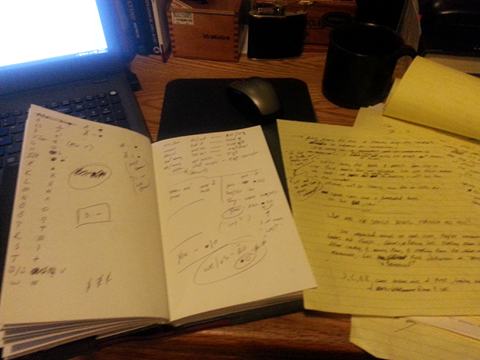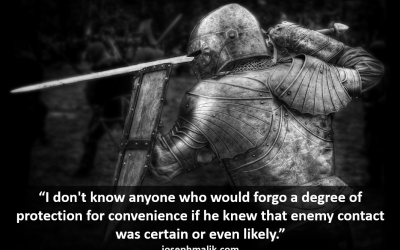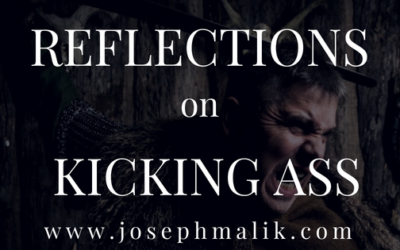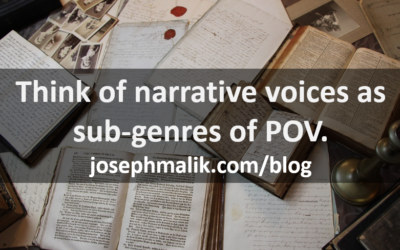Touching back on language, today, because I found some old beat sheets and dialogue excerpts in my Boxes O’ Worldbuilding a few days ago. And because any day, now, my editor is going to run into the Faerie during the line edit and I’m very likely going to end up in a long conversation involving copious use of the words “what the fuck” and “frankly.” Plus, I mentioned some of this yesterday on a writing forum, resulting in strident messages from authors with published novels who literally don’t know what allegory is and are adamant that it’s not necessary to know. Hopefully one or two of them are now reading my blog.
So, linguistic allegory time. Let’s get deep. Let’s build.
The Faerie in my series are long-lived. Let’s get that out of the way.
I purposefully stuck with standard tropes for a lot of the worldbuilding in the series, for reasons I’ll get into another time. No, seriously. There’s an overarching point to the series (that allegory thing again), and you’ll see it at the end of each book but it will all really come together around the climax of Book IV. Probably. Maybe V. But I need the tropes to pull this off, so I’m using them.
Where was I? Right. Elves. Long lifespans. I wanted to develop a language that reflected their worldview. I firmly stand by the Sapir-Whorf hypothesis in that I believe that our concepts and ideals are shaped by our language. Languages define cultures because languages enable—and limit—ideas. The differences in those ideas, sculpted by languages, drive worlds. And wars.
About 20 years ago, in a flurry of early novels, sketches, shorts, and poorly-concepted false starts that would eventually become the building blocks of this series, I created a Faerie conlang. This is where those of you who know me say, “Of course you did.” I have a whole handwritten journal on it, like, a hundred pages. Many of my early books—and long-dead starts of books—incorporated it. Back then, I constructed an accent off the conlang by employing intentional misuse of contraction and misspellings as well as the occasional italicized Faerie word for which there was no English—or human—translation. This made an unreadable mess of the dialogue but man, it was cool. I really thought I was smart.
Admittedly, I’ll still build dialect through contraction, just not as egregiously. Carter, for instance, typically starts his sentences without a prepositional phrase, and slurs things together. “Guess we oughta go in there.” Whereas Jarrod, from an Ivy-League family and a little more cool-headed about things, would keep the prepositional phrase and answer, “I guess so.” Generally. I’ll change up the dialogue to reflect stress on the character, as well. I mean, it’s dialogue. It drives the scene.
So when it came to building a language for the Faerie, I wanted something that would define their thoughts and characteristics. The trope about Faerie being immortal always leads me to think of Wowbagger the Infinitely Prolonged from The Hitchhiker’s Guide to the Galaxy; like him, I don’t see how anyone could take everything so seriously and also like him, if I was immortal I’d be a real bastard about it. So I nixed immortality and just gave them long lifespans and the ability to die. No one really knows how long they live. Centuries, probably. I left it intentionally fuzzy. But they get old. And they die. Anyway, that led me to the conclusion that they’ll have a very different way of thinking, because they’ll see the world differently.
And if they think differently, they’ll speak differently.
Here’s the thing. When I was building the conlang, I was studying linguistics (go figure). So I learned of E Prime at a fortuitous time in my life. And yes, generally, those aren’t words you see put in that order very often.
E Prime, or E’, removes the verb “to be” and all its forms (is, are, am, was, were, be, been). This leads to an exacting use of English. Instead of asking, “How many are there?” In E’ you’d ask, “How many did you see?” or, “How many did you bring?” or, “How many did you count?”
See? Exacting.
Instead of “What is that?” You might say, “Please explain this to me.”
Subtle, but weird.
By removing the verb “to be,” I capture a (relative) immortal’s view that everything is transient and/or conditional. When you live for a thousand years, very few things “are” for more than moments. Very zen. And a wonderful thought exercise. When I was first experimenting with E’, I would speak it just to see if people noticed. (I still use it at parties when I want people to go away.)
Anyway, the Faerie conlang is built in E Prime. I scrapped the conlang probably ten years ago, and I’m contemplating selling it. No, seriously. After I scrapped it, though, I kept the idea of the Faerie speaking in E Prime, I just did it in English. (Of course I use English as the substitution for the common language of Gateskeep, because I’m not going to write a 400-page novel in a conlang. At least, not as a debut. Although. . . hmm, maybe I’ll keep it after all.)
A word of explanation about this next part: I build in varying kinds of limiting verse as a writing exercise. Haiku, iambic pentameter, limerick. Because, writing exercises. You do writing exercises, right? (“Do you even lift, brah?”)
While building the conlang, wildly drunk, I was working on a writing exercise and stumbled upon Aeolic verse, which is a construction of Greek poetry that has to do with the sounds of words more than their rhythm. Well, it technically is metrical if you speak Classical Greek, but the important part of this is that Aeolic verse found its way into some post-Classical English poetry.
Winter, though, has the right tense for a look indoors
At ourselves and with First Names to sit face to face,
Time for reading of thoughts, time for trying out
Of new meters and new recipes, proper time
To reflect on events noted in warmer months
Till, transmuted, they take part in a human tale.
— “In Due Season,” by WH Auden
What’s cool about this—read it out loud—is that since we weight our syllables differently in English than the Greeks do, the resulting English, built in Aeolic verse, has a beautiful lilt and ring to it. I particularly liked the subtlety of an unexpanded choriambic nucleus, which is two “short” words (by Classical Greek definition of syllabic weight, “short” means with a short vowel or a consonant at the end; these would be unweighted) next to each other, following, or followed by, a “long” word, which either has a long vowel or ends in a diphthong, which would be stressed in Classical Greek but not necessarily in English. This is because English was devised by total goddamned madmen, and in American English, we weigh our syllables pretty much arbitrarily.
The lyrical meter I chose for Faerie is expressed as long-short-short-long or BAM – da – da – BAM. When I built the Romanized Faerie accent, I kept the central metric pattern but took some license with it, adding multi-syllabic words on the “long” side and caesurae (via punctuation) on the “short” side instead of sticking to beats or strict trochaic rhythm, because for fuck’s sake, I’m not going to have a scene where everyone is speaking in Greek freaking poetry. Plus, in my head, weighted English with unexpanded choriambic nuclei starts sounding like the melody to “The Man on the Flying Trapeze.”
By deviating from this metrical device, I can construct varying degrees of a Faerie accent.
For instance, a Faerie says up front that she isn’t fluent in the common language, but she wants to talk because she likes human stories.
In English (or Common, or whatever you use for your shared language) she might typically say, “I’m not fluent in your language, but please talk to me. Human stories are my favorites.”
In a Faerie accent, though, the scene reads like this—actual text italicized, speech bolded:
“I never get to speak your language,” she said.
Looking at this in the long-short-short-long / long-short-short-long unexpanded choriambic meter, we get (long long short short long short long). Heavy Faerie accent; all but two words fall into the Faerie speech pattern.
The scene continues:
Her Falconsrealm dialect was excellent though the consonants were very hard. “And your people have the best stories.”
Again: (short short long [long] short short long long.) (The bracketed long refers to a multi-syllabic word ending in a diphthong, which equates to two longs; hey, my language, my rules.) This entire last phrase is in a Faerie accent, which is why it starts on a conjunction and after a considerable explanatory caesura; the accent forces it to.
Later, instead of saying “I’ll be here when you get back,” she says, “Come back to me when you’ve done this brave thing. I’ll wait for you here.”
This last phrase is (short short long long short long short short long long [short]. long long short long short [short].) (The bracketed shorts are punctuated caesurae, which count as an extra short.) This is still in a heavy Faerie accent; 15 of the 17 words in this last phrase fall into the conlang phonetic (okay, technically, “subscribed trochaic-phonologic”) meter.
This is the stuff I need to work out with my editor, and I’m already thinking she’s underpaid.
When I started writing in E’ with unexpanded choriambic nuclei, it gave the Faerie an exacting grammatical framework in a lilting dialect that I’m guessing you wouldn’t quite pick up on unless you’re reading this post and you now know to look for it. Or unless you were a double major in classics and linguistics and you bought Dragon’s Trail and you’re reading this right now to be sure that you’re not more baked than you thought you were, because you just got to the scene where Jarrod meets Akiel, and now you’re going back and rereading the scene with Kaeili and wondering if I did this shit on purpose and if so, can I keep it up for the rest of the series.
You bet your ass I did, and you bet your ass I can. And you may want to claw your eyes out after hearing this, but I typically do it drunk. I don’t even work the math, anymore. I can pen Faerie accents from the sounds, alone. (long short short long long short short long long.)
Anyone interested in purchasing a Faerie conlang, use the contact form on the front page. Serious offers only.

Serious offers only. I’ve even imported the orthography into a .ttf.







Hi, Like your language forms. But if you’re Usually drunk when doing it, how can you be so alert? I write using thoughts with oneself. And, I just discovered that characters are independent creatures. So now the fun begins. I follow no linguistic forms. I truly forgot what a diphthong is, if I ever knew. Heard it a lifetime ago.